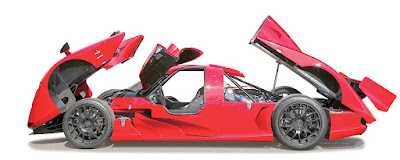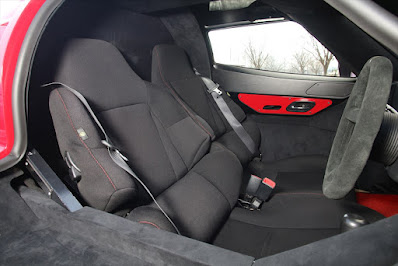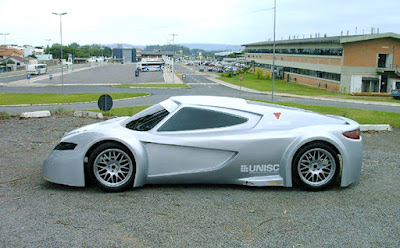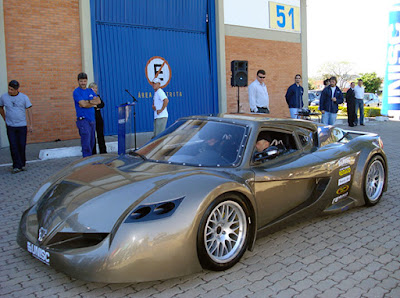Hidden GEMS - In the world of classic cars, few vehicles capture both charm and history as effectively as the Fiat Topolino 750MM Panoramica Coupe. Despite its compact size, this car has an extraordinary backstory, deeply intertwined with the design genius of Zagato, a styling house that has significantly influenced automotive history. To fully appreciate this vehicle, it’s crucial to understand its origins and unique features.
 |
| The 1949 Fiat Topolino 750MM Panoramica Coupe crafted by Zagato features the "Panoramica" body style, which brought a sense of openness with its unique greenhouse-like design. (Picture from: QuirkyRides) |
The story of this car began after World War II, when Zagato's founder, Ugo Zagato, sought to innovate car design. His primary focus was on creating more spacious interiors, a groundbreaking concept at the time. This led to the development of the creation of the "Panoramica" body style, featuring a distinctive greenhouse-like design that offered a sense of openness. The Panoramica design was applied to various vehicles, from Ferraris to the Fiat Topolino, merging practicality with elegance. This particular Fiat Topolino 750MM, built in 1949, is one of only eight ever produced, making it a rare gem in the automotive world.
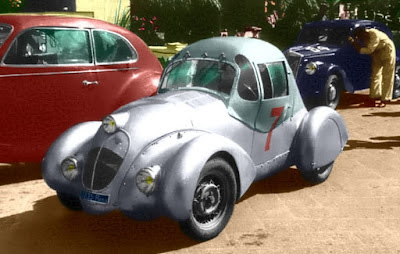 |
| The 1938 Fiat 500A Topolino Hard Top by Zagato participated on the 1938 Mille Miglia (B&W photo colorized). (Picture from: MrScharroo's Weird Car Museum) |
Despite its small stature, the Topolino is anything but insignificant. In fact, this car placed 4th in its class during the famous Mille Miglia race, an impressive feat given its modest 16-horsepower engine. Weighing just 900 pounds, the car was nimble and capable of reaching an average speed of 57 miles per hour during the race. For its time, this was quite an accomplishment, especially for such a lightweight vehicle. Its success in competitions like Mille Miglia only added to its allure, elevating its status among collectors.
 |
| The Fiat Topolino 750MM Panoramica Coupe stands out with its distinctive wraparound windows, giving the car a unique and futuristic look. (Picture from: MotorTrend) |
One of the most striking features of the Fiat Topolino 750MM Panoramica Coupe is its exterior design. The wraparound windows, a signature element of the Panoramica series, give the car a unique and almost futuristic appearance. These large windows not only provided drivers with better visibility but also contributed to the overall sense of space within the small cabin. The use of lightweight materials like aluminum and Plexiglas further enhanced the car's design, making it lighter and more agile on the road.
 |
| The use of lightweight materials like aluminum and Plexiglas enhanced the 1949 Fiat Topolino 750MM Panoramica Coupe's design, making it lighter and more agile. (Picture from: DeviantArt) |
Inside, the Topolino offers a minimalist but functional interior. Though small, the car was designed to maximize space, and the clever use of materials made it feel more open. However, its design did come with some limitations. The car was primarily built for cooler climates, as ventilation was limited to small front and rear windows. Despite these quirks, the car's interior remains a testament to Zagato’s ability to balance aesthetics with practicality.
 |
| The 1949 Fiat Topolino 750MM Panoramica Coupe features a minimalist yet functional interior, cleverly designed to maximize space and create an open feel. (Picture from: Coachbuild) |
What makes the Topolino 750MM even more fascinating is its historical significance. This car was part of the first wave of Zagato's post-war creations, marking the beginning of a long line of collaborations between Zagato and other prestigious brands such as Ferrari and Aston Martin. While later Zagato designs became synonymous with high-performance supercars, this early creation laid the groundwork for what was to come. It represents a period of experimentation and innovation, where Zagato pushed the boundaries of what a small car could be.
 |
| The 1949 Fiat Topolino 750MM Panoramica Coupe was designed mainly for cooler climates, with ventilation limited to small front and rear windows. (Picture from: MotorTrend) |
Today, this Fiat Topolino 750MM stands as a collector's dream, not only because of its rarity but also due to its rich history. It might not have the immediate recognition of other classic racers like the Ferrari 166MM or Talbot Lago, but its role in automotive history is just as important. From its participation in the Mille Miglia to its unique design, this car is a true example of post-war creativity and engineering. | PAaPlH-Urjo |
 As we look back at this Fiat Topolino, it becomes clear that it’s not just a car, but a symbol of innovation and resilience. Through its success on the race track and its distinctive design, this little car holds a special place in the world of classic automobiles. Though only a few of these cars remain today, their legacy endures, reminding us of an era where creativity and craftsmanship reigned supreme. If you're curious to see another equally unique Topolino, be sure to check it out here. *** [EKA | FROM VARIOUS SOURCES | MOTORTREND | VWVORTEX | CONCEPTCARZ | SUPERCARS.NET | CARANDDRIVER | DEVIANART | COACHBUILD | VELOCETODAY | FORUM.RETRO-RIDES | QUIRKYRIDES ]
As we look back at this Fiat Topolino, it becomes clear that it’s not just a car, but a symbol of innovation and resilience. Through its success on the race track and its distinctive design, this little car holds a special place in the world of classic automobiles. Though only a few of these cars remain today, their legacy endures, reminding us of an era where creativity and craftsmanship reigned supreme. If you're curious to see another equally unique Topolino, be sure to check it out here. *** [EKA | FROM VARIOUS SOURCES | MOTORTREND | VWVORTEX | CONCEPTCARZ | SUPERCARS.NET | CARANDDRIVER | DEVIANART | COACHBUILD | VELOCETODAY | FORUM.RETRO-RIDES | QUIRKYRIDES ]Note: This blog can be accessed via your smart phone







